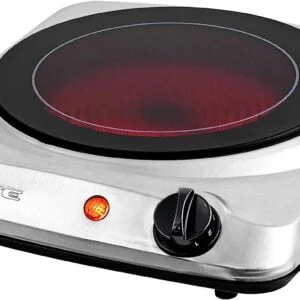Indoor Wood Burning Stoves
No Results Found
The page you requested could not be found. Try refining your search, or use the navigation above to locate the post.
Guide to Indoor Wood Burning Stoves: A Cozy and Efficient Heating Solution
Indoor wood-burning stoves have been a popular heating option for centuries, and their charm and practicality continue to appeal to homeowners seeking a cozy and efficient way to heat their living spaces. Whether you want to reduce your reliance on traditional heating systems, create a rustic ambiance, or simply enjoy the comforting crackle of a real wood fire, an indoor wood-burning stove can be a fantastic addition to your home.
Choosing the Right Stove:
When selecting an indoor wood-burning stove, consider the size of the area you want to heat and the stove’s heating capacity. Measure the space’s dimensions, taking into account the room’s insulation, ceiling height, and any open floor plans that might affect heat distribution. Choose a stove with the appropriate heat output to suit your needs, ensuring you neither waste wood nor struggle to keep the room warm.
Safety and Clearances:
Safety is paramount when using a wood-burning stove indoors. Ensure you comply with all local building codes and regulations regarding stove installation. Most wood stoves require specific clearances from walls, floors, and combustible materials to minimize the risk of fires. Follow the manufacturer’s guidelines on clearances to maintain a safe environment around the stove.
Proper Installation:
Have the wood stove installed by a professional technician who is familiar with local regulations and certified for stove installation. Proper installation ensures that the stove functions efficiently and safely. This includes proper venting and chimney installation to ensure proper draft and smoke evacuation.
Chimney and Vent Maintenance:
Regularly inspect and clean the chimney and venting system to prevent the buildup of creosote, a flammable byproduct of burning wood. Creosote can lead to chimney fires if not cleaned regularly. A clean and well-maintained chimney will also improve the stove’s efficiency and reduce the risk of smoke entering your living space.
Choosing the Right Wood:
Use seasoned hardwood in your indoor wood-burning stove. Seasoned wood has been dried for at least six months and has a lower moisture content, which results in cleaner and more efficient burning. Avoid burning green or wet wood, as it produces more smoke and creosote buildup.
Fire Safety Precautions:
Never leave a wood-burning stove unattended when it is in use. Keep a fire extinguisher nearby and ensure that smoke detectors and carbon monoxide detectors are installed and functioning properly in your home. Have a fire safety plan in place for your family and review it regularly.
Proper Airflow and Draft:
Learn how to adjust the stove’s air vents to control the combustion process. Proper airflow ensures efficient burning and minimizes smoke production. Experiment with the vents to find the right balance for optimal heat output and clean burning.
Ash Removal and Cleaning:
Regularly clean the ash from the firebox to maintain efficient burning. However, always leave a thin layer of ash at the bottom to help insulate the stove and assist in starting the next fire.
Heating Efficiency:
Use the wood-burning stove as a supplementary heat source in conjunction with your central heating system. Stoves can effectively heat a room or specific area, but they are not designed to replace a whole-house heating system.
Regular Inspections:
Have your wood-burning stove and chimney inspected annually by a qualified professional. This will ensure that any potential issues are identified and addressed promptly, ensuring safe and efficient operation.
By following this guide, you can enjoy the warmth and charm of an indoor wood-burning stove while ensuring the safety and efficiency of your heating system. Remember to practice responsible wood burning, and enjoy the comfort and ambiance this timeless heating solution brings to your home.


